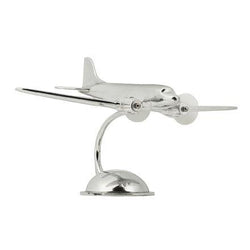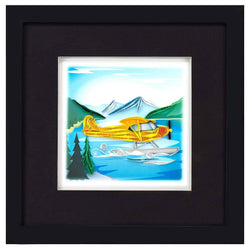We’ve covered the largest aircraft, smallest aircraft, most produced aircraft, and most affordable aircraft. Now it’s time to talk about the fastest plane in the world.
For this post, we’ve rounded up a list of the 10 fastest planes plus details about an 11th whose release is highly anticipated.
Think you know which supersonic aircraft broke the speed record? Let’s find out!
Table of Contents
- 1. General Dynamics F-111 Aardvark
- 2. McDonnell Douglas F-15 Eagle
- 3. Mikoyan MiG-31 Foxhound
- 4. North American XB-70 Valkyrie
- 5. Bell X-2 Starbuster
- 6. Mikoyan MiG-25 Foxbat
- 7. Lockheed YF-12
- 8. Lockheed SR-71 Blackbird
- 9. Lockheed A-12 Oxcart
- 10. North American X-15
- 11. Lockheed Martin SR-72 Son of Blackbird
- Aircraft Speed FAQs

1. General Dynamics F-111 Aardvark
The US Air Force flew the all-weather interdiction Aardvark from the 1960s until 1998. The General Dynamics F-111 Aardvark was a supersonic tactical fighter bomber(nicknamed the Pig). The F-111 could be outfitted with a payload of bombs, a nuclear bomb, or air-to-air missiles. A machine gun was also an optional add-on, though it was rarely used.
Give the long-standing US Air Force precision strike fighter jet a place of honor in your military aircraft model plane collection. You can enjoy fighter jets that can make a fine addition to your home with a 1/48 scale mahogany model F-111 Aardvark.
Mach Speed: Mach 2.5

2. McDonnell Douglas F-15 Eagle
The McDonnell Douglas F-15 Eagle is a twin engine US Air Force air superiority fighter that was conceived as a response to the release of the Soviet MiG-25 interceptor. The Eagle first flew in 1972 and this model is still considered a formidable military aircraft.
Due to its continued success, multiple variants of the McDonnell Douglas F-15 Eagle were built including single-place and two-place versions plus Japanese and South Korean spinoffs. The F-15EX Eagle II is the most recent addition to the F-15 line-up, and this new Air Force fighter can carry almost 30,000 pounds of air-to-ground and air-to-air missiles.
Add some high-powered air superiority to your keys with a solid pewter F-15 keychain.
Mach speed: Mach 2.5

3. Mikoyan MiG-31 Foxhound
The MiG-31 Foxhound Russian interceptor debuted in 1975 as a replacement to the Mikoyan-Gurevich MiG-25 Foxbat. The MiG-25 was unable to fly at low altitudes and carried fewer surface to air missiles, while the more maneuverable Foxhound was the first soviet fighter to have look-down and shoot-down capability.
Although the MiG-35 was un upgrade from the MiG-25, it is interesting to note that the Mikoyan-Gurevich MiG-25 Foxbat had a higher top-speed.
The MiG-31 was such a successful aircraft that these fighter jets are still in use today. As the Foxhound was never exported, only the Russian Air Force has access to the MiG-31.
Mach speed: Mach 2.83

4. North American XB-70 Valkyrie
The XB-70 Valkyrie supersonic strategic bomber debuted in 1964 as a planned replacement craft for the B-52 Stratofortress. The Valkyrie’s six engines generated the high speeds needed to evade Soviet interceptors and escape the blast of the nuclear bombs the Valkyrie was designed to drop.
Unfortunately, the XB-70 was not optimized to evade the type of surface-to-air missiles that were developed shortly after the Valkyrie’s debut.
The Valkyrie’s design also suffered from hydraulic leaks, fuel leaks, landing gear issues, and weaknesses in its honeycomb construction. The program was ultimately cancelled, and only two Valkyrie aircraft were built.
There may have been only two full-size XB-70s produced, but you can take home a 1/150 scale XB-70 Valkyrie model aircraft.
Mach speed: Mach 3.02

5. Bell X-2 Starbuster
The Bell X-2 Starbuster was an early swept-wing rocket style aircraft whose development started in the mid-1940s. It was meant to help the United States Air Force and the National Advisory Committee for Aeronautics (NACA) research stability, control effectiveness, and the structural effects of aerodynamic heating at high speeds and altitudes.
A modified Boeing B-50A bomber would carry the X-2 to its launch altitude, where the X-2 would drop away and fly under its own power.
Numerous glide flights were successfully accomplished, and in 1955, the first powered flight took place.
Unfortunately, the following year, Air Force test pilot, Captain Milburn Apt lost control of the experimental fighter when he unexpectedly initiated a sharp turn following a successful test flight at speeds faster than Mach 3. Apt bailed out but did not survive the high-speed landing. His death led to the unfortunate demise of the X-2 program.
Mach speed: Mach 3.196

6. Mikoyan MiG-25 Foxbat
The MiG-25 was the Soviet Union’s answer for a supersonic interceptor and reconnaissance craft fast enough to intercept American fighter jets like the Lockheed SR-71. The final design excelled at high-speed, high-altitude flights and had a steep rate of climb, but it was less agile and maneuverable, especially at low speed.
Debuting in 1964, the MiG-25 is still one of the fastest military combat aircraft ever built, and a few have remained in use in Russia.
A variant, the MiG-29 Fulcrum (max speed Mach 2.25) has also been used to fly paying space tourists up to 22km above the earth through the Russian Edge of Space flight program.
Mach speed: Mach 3.2

7. Lockheed YF-12
Only three prototypes of Lockheed’s YF-12 two-place interceptor aircraft designs ever took to the skies, but this model still holds records for the largest, heaviest, and fastest manned interceptor ever flown.
The YF-12 was the two-seat version of the Lockheed A-12 Oxcart and was similar in design to its relative the SR-71 Blackbird, except the YF-12 carried an armament of three air-to-air missiles while the Blackbird was unarmed.
Although the YF-12 was tested by both the Air Force and NASA, the interceptor never flew any military missions. Instead, it provided NASA researchers valuable data about the aerodynamic, structural, and thermal impacts of sustained high-altitude flight on aircraft. The information gathered from the project was helpful for designing the aircraft used by the original space program.
Add the YF-12 to your aircraft model collection with our diecast, mahogany, or resin Blackbird SR-71 models. You can even get your favorite young collector started with the Hot Wings SR-71 model aircraft.
Mach speed: Mach 3.2

8. Lockheed SR-71 Blackbird
One of Lockheed’s most famous designs is the SR-71 Blackbird reconnaissance aircraft that was used by the U.S. Air Force. First constructed in 1964, the Blackbird was based on the designs for its predecessor, the A-12 Oxcart.
The Lockheed SR-71 Blackbird got the moniker “Blackbird” after the special heat-dissipating black paint job covering its titanium alloy airframe. Unlike the similar YF-12, the SR-71 carried no weapons as it was built purely for speed and observation at ultra-high altitudes.
The SR-71 still holds the world record for the fastest and highest-flying air-breathing manned aircraft as well as the fastest cross-country American flight. A Blackbird flew from Los Angeles, CA to Washington, D.C. in a mere 64 minutes 20 seconds.
Mach speed: Mach 3.33

9. Lockheed A-12 Oxcart
Lockheed’s A-12 Oxcart built for the CIA bears a striking similarity to its SR-71 used by the U.S. Air Force. The family resemblance makes sense as the SR-71 Blackbird was a spinoff of the Oxcart, and both craft were used for reconnaissance.
Although the SR-71 holds the official speed record for a piloted aircraft, Lockheed and the CIA agree that the A-12 had a slightly faster documented speed.
The Oxcart was developed between 1959 and 1965 as an intended successor for the very fast, high-altitude U-2 “spy plane” used to monitor activities in the Soviet Union.
The A-12 was a stealth aircraft with a distinctive black iron-infused paint scheme and an exterior design that minimized its radar cross-section. Radar absorbing polymer composite materials made of iron ferrite, silicon laminate, and asbestos further absorbed and confused radar returns.
Despite the substantial time and financial investment in the project, President Johnson discontinued the A-12 program in 1968 after just a single year of active use and only one reconnaissance mission flown.
Anti-aircraft-proof CORONA satellites were then available to carry out imagery missions without risk to the lives of American pilots, although the image quality was not as good. Plus, the SR-71 spin-off program for the Air Force was in the works, so it simply didn’t make sense to also continue with the similar A-12.
Mach speed: Mach 3.35

10. North American X-15
The SR-71 holds the official world record for fastest air-breathing aircraft, but the rocket-powered North American X-15 became the fastest manned aircraft in the world in 1967.
The North American X-15 program was launched in 1959 and was designed to aid in piloted hypersonic flight research ahead of and during the Mercury, Gemini, and Apollo spaceflight programs. In fact, Chuck Yeager famously taught Neil Armstrong to fly the X-15 to the edge of space.
The X-15 was viewed as a bridge between manned flight within Earth’s atmosphere and the new world of manned flight into space. Although it was the first winged aircraft to fly at Mach 4, 5, and 6, the X-15 did not take off on its own. Instead, a modified B-52 Stratofortress air-launched the X-15.
The X-15 could fly to extreme altitudes, and in 1963, a NASA test pilot flew the X-15 beyond the Kármán line which officially marks the limits of the Earth’s atmosphere.
X-15 pilots had to wear specialized full-pressure suits while in the cockpit as an added layer of protection should the cockpit lose atmosphere while at near-space altitudes.
Hang a piece of aviation history on your wall in the form of the modern Frank Martin X-15 print with neutral colors to accent any room.
Mach speed: Mach 6.72

11. Lockheed Martin SR-72 Son of Blackbird
Technically #11 is a bit of a cheat since the prototype isn’t expected to make its first test flight until 2025, but the SR-72’s debut is already highly anticipated.
As its name suggests, the SR-72 is the updated, next-generation version of the now retired legendary SR-71 Blackbird. The SR-71 may hold onto its manned aircraft speed records, however, because the SR-72 is slated to be an unmanned reconnaissance, surveillance, and strike aircraft.
Rumor has it the Son of Blackbird will be outfitted with “Skunk Works’” proprietary High-Speed Strike Weapon (HSSW) and powered by new technology in the form of a turbine-based combined cycle (TBCC) propulsion system.
The reusable hypersonic craft is anticipated to be capable of speeds that will allow it to fly around the world in just a few hours.
Mach speed: Mach 6 (anticipated)
We recommend watching this video by Found and Explained on the Lockheed Martin SR-72 Blackbird.
 Aircraft Speed FAQs
Aircraft Speed FAQs
- How fast do planes fly when taking off?
Minimum safe takeoff speed varies depending on aircraft size, weight, engine configuration, altitude, air temperature, and other factors. Smaller private aircraft can take off at as little as 56 knots while the necessary speed for large passenger airliners is closer to 130+ knots.
- How fast do planes fly in the air?
The Wright brothers’ first airplane had a “cruising speed” of 26 knots. By comparison, small private aircraft today have cruising speeds around 120 knots, and passenger jets are closer to 490 knots.
- How fast do planes fly when landing?
- How fast do commercial planes fly?
- Can a plane go Mach 10?
Yes, but this is only accomplished by unmanned aircraft such as NASA's X-43A Hyper-X, which is rocket powered. The fastest military aircraft that can carry a pilot is the SR-71 Blackbird with an extremely fast speed of Mach 3.3.
- What is Mach speed?
Feel the need for more speed?
Now that you know all about the fastest plane in the world, learn all about airspeeds with our guides!
- The 4 Types of Airspeed: How Each Works (Complete Guide)
- How it Works: Airspeed Indicator (Extensive Guide)
- How to Calculate True Airspeed and What It Is (Guide)
- 10 Fastest Single-Engine Planes Today
Did you find this article helpful?
Do you think we missed anything important about the fastest aircraft in the world? Let us know in the comments below!










